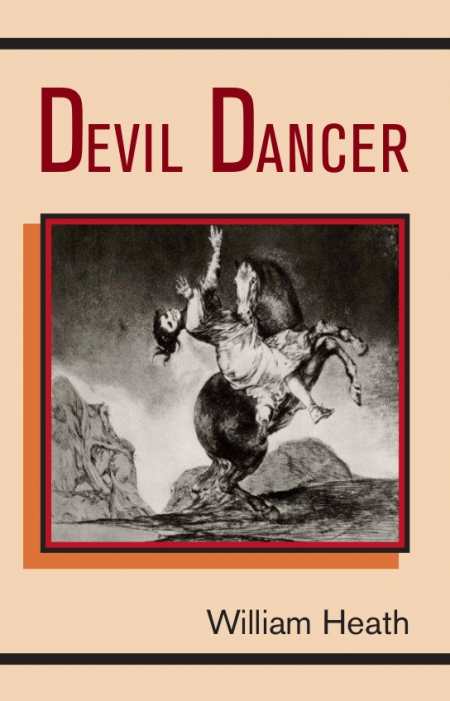Devil Dancer
The day after prize stallion Devil Dancer is shot in his paddock, private detective Wendell Clay meets a woman over some jumper cables and then gets hired to solve the crime; neither turns out to be what they seem. Devil Dancer is a classic mystery with an ex-marine hero who has trouble with relationships and struggles to find his place in society. It moves at a good pace and is concisely written by William Heath.
Most of the major characters in Devil Dancer are well drawn and step right off the pages. Those that feature Julian Harrison, a suspect in the horse’s shooting, stand out. When Clay meets him, he finds a strong connection with the fellow ex-marine. Harrison is twenty-five years younger and black, but the two men connect over what they have in common. Harrison recounts a Vietnam epiphany. “It got me to thinkin—about the war an’ about my life. It occurred to me in that stinkin’ hole with my dead buddy spillin’ his that brains were to think with.” Heath puts you in the room with these two men and you can feel the tension and their understanding. Clay has sought Harrison as one of many suspects in the case, but after their encounter knows Harrison is not a criminal.
Although the book is set in 1972, the omniscient narrator doesn’t treat the setting as the past. Rather, it is written as if 1972 is contemporary. As a result, descriptions and dialogue presented without context are dated to our 2013 ears. The explanation can be found in the Afterword, where Heath reveals he started writing Devil Dancer more than 30 years ago and just now found a publisher. As a result, a younger contemporary reader may find the characters out of touch and issues they struggle with shopworn.
The dramatic hero struggles with a woman because she is comfortable with her sexuality. It’s hard to accept now, since that description would fit most women in 2013. Similarly, the narrative voice bumbles through descriptions of sex, which alternate between crass and awkward. Readers at the time of publication might find Clay’s and the author’s struggles pathetic. The stark racism that characters encounter without flinching can only be accepted by a narrative voice from decades ago. Yet, if the reader can reorient to the 1970s mindset, the struggles ring true. It’s not a flaw in the book, only in the timing of its release.
Had Devil Dancer been released in 1982, it would stand out for its resonating honest dialogue and human interactions. When it was written, an ex-marine may have been a novel hero, whereas today the ex-marine private investigator is de rigueur. If a reader can approach Devil Dancer as one might read early Robert Ludlum novels, it offers characters who are real and a plot that holds interest.
Reviewed by
Thomas Kachadurian
Disclosure: This article is not an endorsement, but a review. The publisher of this book provided free copies of the book and paid a small fee to have their book reviewed by a professional reviewer. Foreword Reviews and Clarion Reviews make no guarantee that the publisher will receive a positive review. Foreword Magazine, Inc. is disclosing this in accordance with the Federal Trade Commission’s 16 CFR, Part 255.

